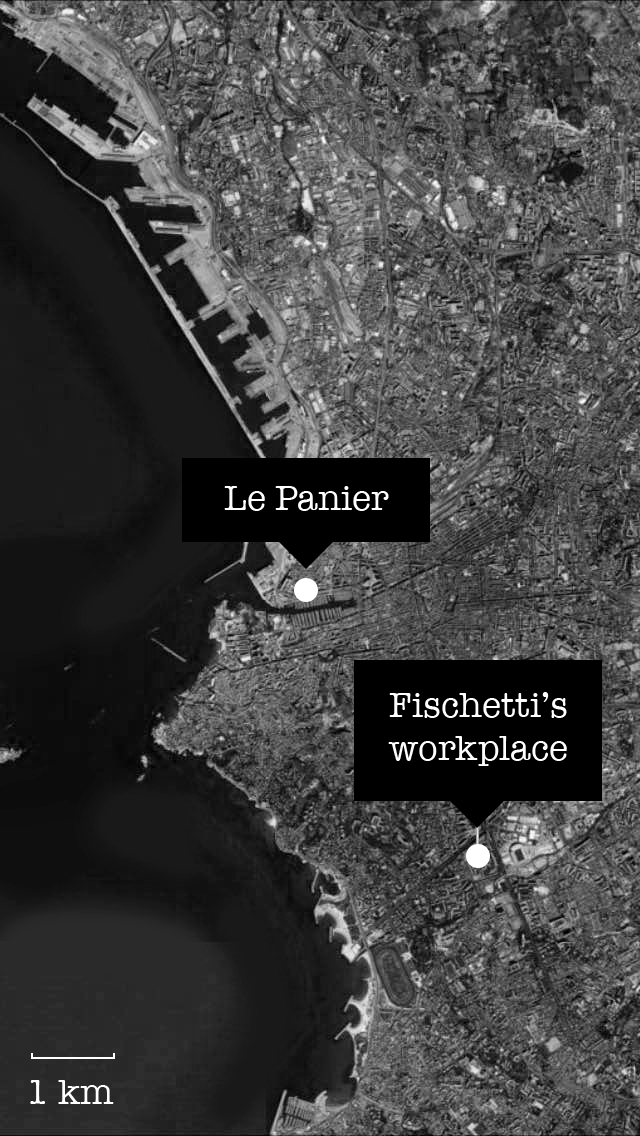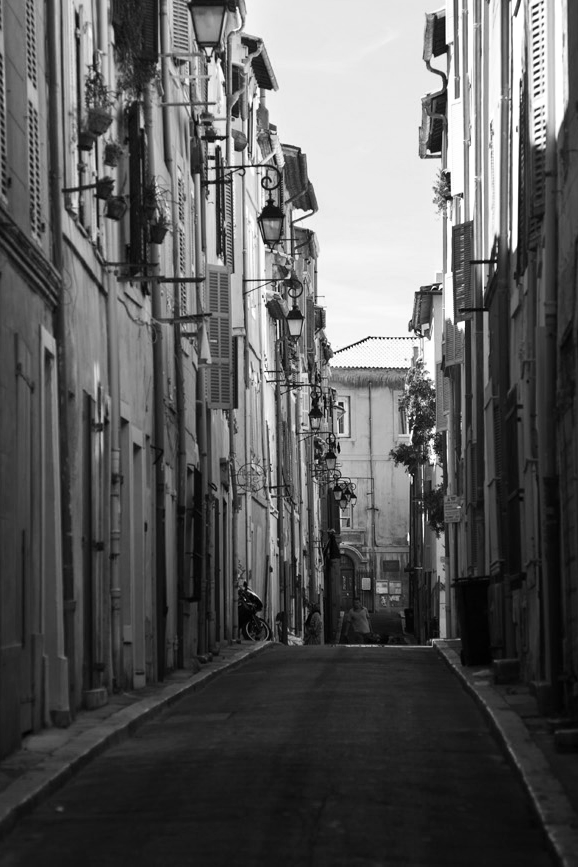Bad (Criminal) Company
It’s almost summer in Marseille. A courier from the town hall’s sport offices arrives at work near the Velodrome, the renowned soccer stadium in a city famous for its team as well as its passionate supporters—but also for its high-rate of homicides and a century-long history of organized crime. It’s around 8.30 a.m., on May 20th of 2015 and Bernard F., the town employee, who turned 50 one week ago, arrives carrying a bag full of fresh pastries. Just as he goes to open the door, a man wearing a motorcycle helmet opens fire on him with a .357 Magnum revolver. The man walks back toward his accomplice and they flee on a motorcycle, leaving Bernard F. bleeding on the ground. Nearby parents walking their children to school in this relatively quiet, well-off neighborhood, hear the shots ring out.

Bernard F.
A police source says they are just starting the investigation regarding Bernard F.’s murder, which will take months. The not-apparent but pivotal detail here is that Bernard F. hailed from the Panier, an iconic corner of the old Marseille near the harbor, now loved by tourists but historically linked to the Corsica-Marseille organized-crime ring known in part for running the heroin labs of the French Connection. In the last decade or so, their activity has been pushed to the background as police, politicians, and media have turned to Marseille’s ghettos and their own large-scale, powerful and deadly drug traffics. But the old Panier-Corsica heads are starting to cooperate and work with this neo-criminal rings. And Bernard F.’s life is proof that France’s mediteranean blend of “traditional” organized-crime is still very much active.
The judiciary police knew Bernard F. as a man connected with the Corsica-Marseille traditional organized-crime scene. Cited in a La Provence article, they hint at battles between clans regarding control of the Panier as the reason for Bernard F.’s death. But a journalist specialized in Marseille’s criminal scene doubts it. Bernard F. wasn’t important enough to warrant this fate: just a minor rogue who dabbled with the big guys and did footwork for them.

Marseille
But his past tells a slightly different story, that he was indeed very close to famous heads of the Corsica-Marseille scene. According to another journalist who followed the case closely but wishes to remain anonymous to protect his work, he was the main underling of Roland G., an historical figure of Marseille’s criminal scene who was killed in 2011. Murdering Bernard F. meant killing the last remaining member of this group. According to this same journalist, among others, Bernard F. was also the subordinate of Jean-Pierre A., another figure of traditional criminality in Marseille for whom Bernard F. was said to collect slot machine money—gambling being one of the main sources of revenue for these “traditional” crime rings. Jean-Pierre A. was also known to be the lieutenant of Ange-Toussaint F., supposed head of the Bergers Braqueurs (the “Shepherd-Robbers”), a criminal clan from Northern Corsica and one of the most, if not the most, dangerous of the island.
However according to his lawyer and friend for 17 years, Isabelle Ansaldi, Bernard F. was no criminal. He was “a real Marseille man, who loved his wife, motorcycles, card games, and was all heart, always ready to help out his friends.” His only connection to criminals like Jean-Pierre A. and Roland G. was that they were childhood friends with whom he grew up in the Panier. They still remained close and even went out to restaurants together. And it was only through these men, by chance, that Bernard F. met even bigger Corsican criminals like Ange-Toussaint F.

Ange Toussaint F.
Yet it was also, even if indirectly, under these men’s orders that Bernard F. took part in the “Calisson” case, named after the famous almond pastry from Aix en Provence. From 2005 to 2012, Ange Toussaint F. had been, from jail, at the head of a large racketing scheme previously ran by iconic criminals like Gaëtan Zampa and Francis Le Belge. The “Shepherds” extracted thousands of euros from about ten nightclubs in Aix. Bernard F. was said to have helped by carrying cash envelopes in between victims and racketeers, but his exact role remains unclear. For this, he was accused of extortion committed by an organized group, conspiracy, and unexplained income. He was acquitted for all accusations but the latter, for which he received a two-year sentence, a 14,000 euros fine, confiscation of assets, and was prohibited from public office.
Still he was out of jail by January, after spending little more than 5 months there. According to his lawyer, a government agency (DNVSF) had afterwards declared that his finances were in order and his sentence was to be re-evaluated. However the “Calisson” case wasn’t the only criminal affairs that brought police suspicion to Bernard F.—although he was rarely charged—and the Corsicans weren’t the only unsavory individuals he associated with. Most notably, he was arrested in Andorra with a member of the Marseille town council trying to cash 1.3 million euros in checks stolen from a notary’s office. But Bernard F. still worked for the town hall when he was killed, a job often described as a cover-up for more lucrative activities. He showed that a minor player in the traditional scene could remain employed in the town hall for almost thirty years.
As of now Ange Toussaint F. stays in jail but the « traditional » Corsica organized-crime clans remain very much active. Marseille is no Chicago, and the Shepherds Robbers no Cosa Nostra but, under the mediteranean sun, organized crime doesn’t seem ready to end.

Panier Street

